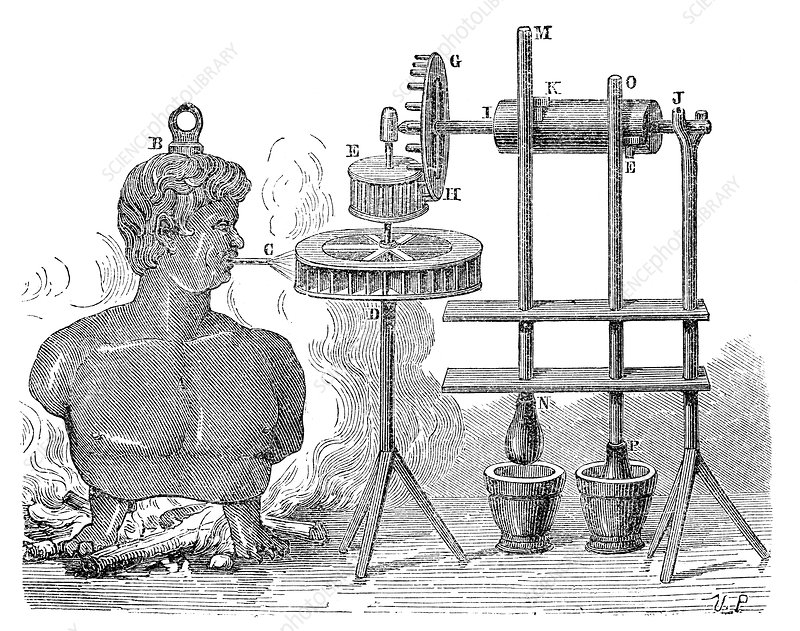0 A.D. - 1000 A.D. - An account of the unbelievable innovative progress in the ancient world
0 A.D. - 1000 A.D.
by B. Yohan Varghese
Not a chance! What "innovations" could have possible been made 2000 years ago?
Actually, imaginary interlocutor, you are wrong. Mechanical engineering made great progress even in times as early as this.
THE AEOLIPILE:
This is a steam powered machine invented by Hero of Alexandria in the 1st century A.D. This invention, however, appeared first in the writings of Vitruvius (ca. 30-20 B.C.). Though no practical use of this invention is recorded, it is noticeable that it would have given many people the crucial idea that steam can also be used to power and rotate mechanical devices. This idea marked the shift from basic tools to complex machinery.
A picture of the Aeolipile
Source: Wikipedia
THE DIFFERENTIAL GEAR SHAFT:
This is basically a gear train (a machine that runs by interconnected gears) connected to three shafts having the property that the rotational speed of one of the shafts is either the average of the rotational speeds of the other two shafts or is a fixed multiple of that average. Ma Jun (200 – 265 A.D.) from China invented a chariot that used this mechanism.
Inside view of a modern differential gear shaft
Source: Wikipedia
THE ONAGER
This was a catapult was invented in the 1st century, and mentioned by Ammianus Marcellinus in 353 A.D. This was primarily used as a siege weapon. The range of the onager was increased over time as the spoon like
structure was replaced by a sling. This developed further leading to the invention of the Chinese traction trebuchet otherwise known as the mangonel which involved more complex mechanisms.
An Onager
Source: Encyclopaedia Britannica
WIND POWER:
An example of utilisation of wind power can be found in yet another invention of Hero of Alexandria who invented the wind-powered organ (though it is found to have technical problems).
By the 9th century, wind-powered mills were developed in regions like Iran, Afghanistan and Pakistan. These mills were used for purposes like grinding grain and pumping water.
I have saved the best for the last.
SONAR:
Now please do be serious. SONAR? In Antiquity?
Indeed, SONAR did play an important role, though many do not know that the ancient practice of SONAR stretches as far back as the first century A.D.
If it were not for Luke, the physician, we would not have known either. Luke was the author of a two part narrative, now commonly known as "The Gospel according to St. Luke" and "The Acts of the Apostles". The first part describes the life, death and resurrection of the Lord Jesus Christ and the second part narrates how the good news of God spread from Jerusalem to many other parts of the ancient world in the first century.
In the Acts, Luke describes a journey which the Apostle Paul undertook as a prisoner. An extract is given below:
27 On the fourteenth night we were still being driven across the Adriatic Sea, when about midnight the sailors sensed they were approaching land. 28 They took soundings and found that the water was a hundred and twenty feet deep. A short time later they took soundings again and found it was ninety feet deep. 29 Fearing that we would be dashed against the rocks, they dropped four anchors from the stern and prayed for daylight.
Acts 27:27-29 (New International Version)
Verse 28 clearly shows that the sailors used some sound system to detect the depth of the sea beneath them, a technology what we know today as SONAR. This is not to say that SONAR was invented in the 1st century but to show that SONAR was a well established practice even in the 1st century. It seems the ancients were not as outdated and ignorant as popular media seems to think.
Acts 26:7-8, 20 on Papyrus 29 (ca. 250 A.D.)


Comments
Post a Comment